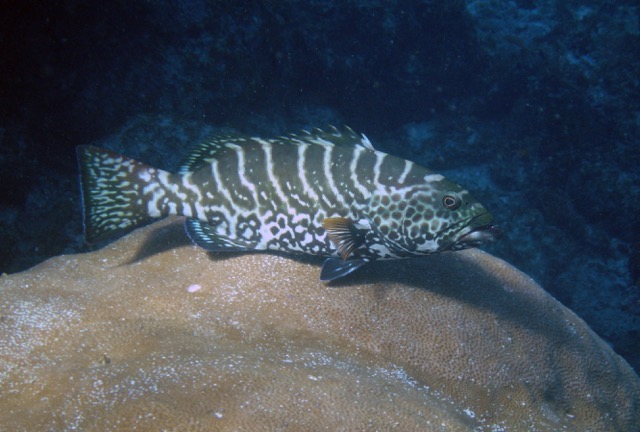CiguaHAB: Ciguatera Investigations in the Greater Caribbean Region: Ecophysiology, Population Connectivity, Forecasting, and Toxigenesis.
Ciguatera fish poisoning (CFP) is the most common form of phycotoxin-borne seafood illness in the world, including the Greater Caribbean Region (i.e., the Caribbean, Yucatan, Gulf of Mexico, Florida Keys, and Bahamas), hereafter GCR. The source of these toxins is the benthic dinoflagellate, Gambierdiscus, which commonly associates with macroalgae (seaweed). Herbivores (fish and invertebrates) feed upon the macroalgae, thereby ingesting the Gambierdiscus cells and their toxins. Carnivores (fish) consume the herbivores, causing the toxins to move into the foodweb. People can be exposed to the toxins by consuming these herbivores and carnivores, leading to CFP. CiguaHAB is a 5-year project funded by NOAA’s Ecology and Oceanography of Harmful Algal Blooms (ECOHAB) Program designed to investigate the conditions that lead to higher toxin production in order to better predict CFP outbreaks in the GCR.
The primary objectives of this research are to:
- Characterize Gambierdiscus population diversity and connectivity on regional and local scales.
- Determine effects of environmental factors on the growth and toxicity of representative strains of Gambierdiscus.
- Investigate Gambierdiscus population dynamics and the environmental conditions that contribute to blooms in several locations for the study region.
- Investigate the fate of ciguatera precursors, toxins and metabolites in the coral reef food web.
- Model the population dynamics and toxin production of Gambierdiscus under different environmental forcings, including those associated with natural and human-induced perturbations such as pollution, reef destruction, and climate change.
- Communicate project results and discuss applications to resource management with stakeholders in the GCR.
The GCR was chosen because of the long history of CFP in some areas (e.g., St. Thomas and the Florida Keys) coupled with the recent outbreaks of CFP in other areas (e.g., Flower Garden Banks National Marine Sanctuary and the Bahamas). Major outcomes and products will also include conceptual models to explain the dynamics of Gambierdiscus blooms and ciguatoxicity in the region, as well as numerical models that simulate population dynamics and toxin production under different environmental forcings. In addition to the substantial scientific knowledge generated by this research, these products represent a major advance in the development of management tools to predict and prevent this complex HAB phenomenon.
The research team includes Michael Parsons (Lead PI, Florida Gulf Coast University), Don Anderson and Mindy Richlen (Woods Hole Oceanographic Institution), Deana Erdner (University of Texas Marine Science Institute), Ron Kiene (University of South Alabama), Yuri Okolodkov (University of Veracruz, Mexico), Alison Robertson (University of South Alabama & Dauphin Island Sea Lab), and Tyler Smith (University of the Virgin Islands). For additional information and related links, please visit our project’s webpage: http://www.fgcu.edu/CiguaHAB/index.html
